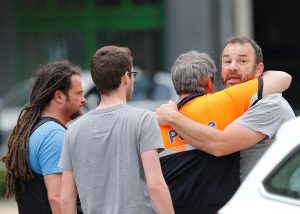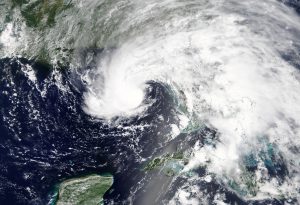
By Anthony Esposito and Sharay Angulo
MEXICO CITY (Reuters) – Mexican business leaders called out the government on Monday over a recent wave of criminal activity that has terrorized large swaths of Latin America’s second-largest economy and led some prominent firms to cut back operations.
Two of Mexico’s top business groups urged the administration of President Enrique Pena Nieto and the candidates hoping to succeed him in a July 1 election to stem the violence and robberies, which they say are putting workers’ lives at risk and hurting investment.
“The high levels of violence have become the greatest obstacle to (economic) activity,” Mexico’s powerful CCE business lobby said in a statement.
Tens of thousands of people have been killed in turf wars between drug cartels and their clashes with security forces since former President Felipe Calderon sent in the military to crush the gangs soon after taking office at the end of 2006.
In recent weeks, dairy producer Grupo Lala shuttered a distribution center in the northern state of Tamaulipas and the world’s biggest Coke bottler, Coca-Cola Femsa, indefinitely shut down a 160-employee distribution center in southwestern Guerrero state.
Canada’s Pan American Silver Corp was the latest to act, saying on Monday it would reduce operations and suspend staff movements at its Dolores silver mine in the border state of Chihuahua because of recent security incidents.
Companies risk extortion, theft, attacks on their logistics chain and physical assault on their employees, according to the American Chamber of Commerce of Mexico (AmCham).
“The impact of corruption, public insecurity, an inadequate justice (system) definitely impacts the cost of investment,” while fear of crime even keeps some executives from coming to Mexico, said Luis Gerardo del Valle, AmCham Mexico’s head of tax affairs.
Train and truck freight thefts have jumped as criminals employ more sophisticated methods.
Last week, miner and infrastructure firm Grupo Mexico said seven freight train derailments between the port of Veracruz and central Mexico were due to “sabotage” and would cost the company 312 million pesos ($16 million).
Mexican industry association Canacintra estimates that small and medium-sized companies spend the equivalent of 6 percent of their income on security, double what they did a decade ago.
‘WE CAN’T KEEP WAITING’
Mexican employers’ federation Coparmex called on the government to stop waiting until the election was over.
“Time is running out for this government, as is the public’s patience. We can’t keep waiting. This is the last call,” Coparmex said in a statement.
Pena Nieto took office in December 2012 promising to get a grip on gang violence and lawlessness. After some initial progress, the situation deteriorated and killings hit their highest level on record last year.
The president’s office had no immediate response to a request for comment.
Pena Nieto is constitutionally barred from seeking re-election, and the prospects of his Institutional Revolutionary Party (PRI) retaining power look grim. PRI candidate Jose Antonio Meade has been running third in nearly all opinion polls.
The principal beneficiary has been leftist Andres Manuel Lopez Obrador, who has built up a strong poll lead on the back of widespread disenchantment with the PRI over corruption and rising violence, as well as sluggish economic growth.
But Lopez Obrador has also faced criticism for floating a possible amnesty for criminals to restore order.
In a thinly veiled jab at Lopez Obrador, the CCE said: “While it is true that violence is not solved by violence, it is also true that crime is not ended by forgiveness or calls to Mass.”
(Reporting by Anthony Esposito and Sharay Angulo; Additional reporting by Stefanie Eschenbacher; Editing by Dave Graham and Peter Cooney)











